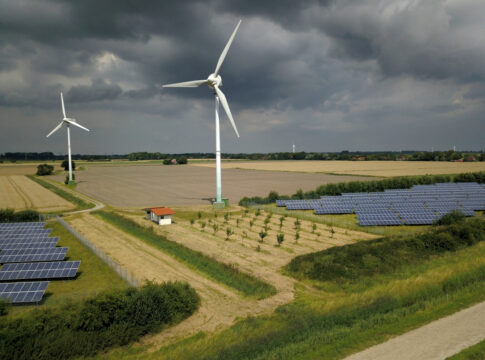In a groundbreaking shift towards a sustainable future, newly published data reveals that in the first six months of 2024, half of the European Union’s electricity came from renewable sources, surpassing fossil fuels for the first time. This milestone is a significant indicator that Europe is on the right path to achieving 100% renewable energy.
The European Commission’s ‘State of the Energy Union’ report, an annual assessment of the bloc’s progress towards energy and climate goals, highlights this remarkable achievement. The report also underscores the critical role of wind and solar power in this transition.
For the first time ever, wind power has overtaken gas as the EU’s second-largest source of electricity, trailing only nuclear power. This is a testament to the rapid advancements in wind technology and the increasing investment in renewable infrastructure across member states.
The year 2023 marked another landmark for the EU, with 56 GW of new solar energy installed, surpassing the previous record of 40 GW set in 2022. This impressive growth in solar capacity reflects the bloc’s commitment to harnessing renewable energy and reducing carbon emissions.
While Europe is making notable strides, other regions are also advancing their renewable energy agendas:
North America: The United States derives around 20% of its electricity from renewable sources as of 2023, with significant contributions from wind, solar, and hydroelectric power. Canada generates about 65% of its electricity from renewables, predominantly hydro. By 2030, the U.S. aims to achieve 50% renewable energy, with the prospect of reaching 100% by 2050 (Energy Information Administration, Natural Resources Canada).
Asia: China leads the world in installed renewable capacity, with renewables accounting for about 29% of its electricity generation in 2023. India derives around 25% of its electricity from renewable sources. China’s goal is to achieve 40-50% renewable energy by 2030, and India aims for 50% by 2070 (China National Energy Administration, International Energy Agency).
Latin America: Brazil generates over 80% of its electricity from renewables, mainly from hydroelectric power, while Chile derived 25% of its electricity from renewables in 2023. By 2030, Brazil aims to maintain and slightly increase its renewable share, and Chile plans to achieve 70% by 2050 (Brazilian Ministry of Mines and Energy, International Renewable Energy Agency).
Africa: South Africa has around 10% of its electricity from renewables, with Morocco generating about 35%. Egypt, as of 2023, had around 9% of its electricity from renewable sources, aiming to reach 42% by 2035. By 2040, Morocco aims to achieve 52% renewable energy (South African Department of Energy, Moroccan Agency for Sustainable Energy, Egyptian Ministry of Electricity and Renewable Energy).
Oceania: Australia generates about 30% of its electricity from renewable sources, and New Zealand generates around 80%, predominantly from hydro and geothermal. By 2030, Australia targets 50% renewable energy, while New Zealand aims for 100% by 2035 (Australian Renewable Energy Agency, New Zealand Ministry of Business, Innovation, and Employment).
Middle East: The UAE generates approximately 3% of its electricity from renewables, with Saudi Arabia around 0.3%. By 2030, the UAE aims to achieve 30%, and Saudi Arabia targets 50% by 2040 (International Renewable Energy Agency, Saudi Vision 2030).
Global Overview: As of 2023, renewable energy accounted for around 29% of global electricity generation. By 2030, the global renewable share is projected to be around 50-60%, with the potential to achieve 100% by 2050 (IRENA, International Energy Agency).
Considering the current progress and the projections from various think tanks and reports, Europe could realistically aim for 100% renewable energy by 2050. This ambitious target will require ongoing commitment, innovation, and cooperation among all stakeholders. While challenges remain, the trajectory is promising, and the momentum is undeniable.
The journey to a fully renewable energy system requires ongoing investment, innovation, and cooperation among EU member states. With continued dedication to sustainable energy solutions, Europe is paving the way for a greener, cleaner future, setting an example for the rest of the world.
With continued dedication to achieving these goals, Europe is leading the global path towards a sustainable, renewable energy future.


